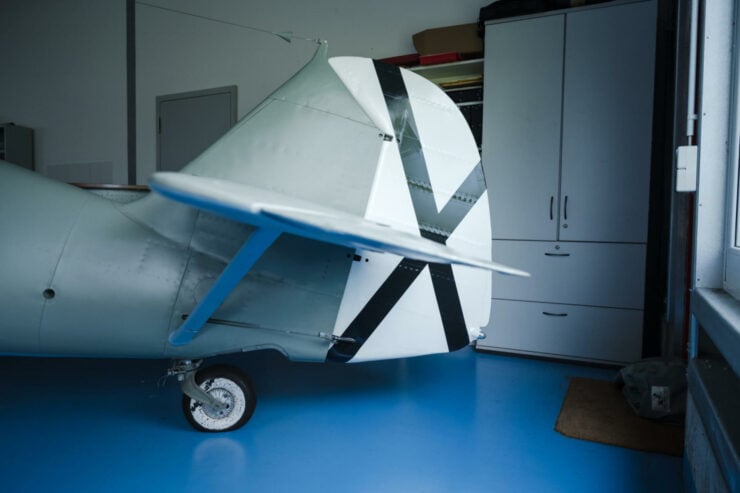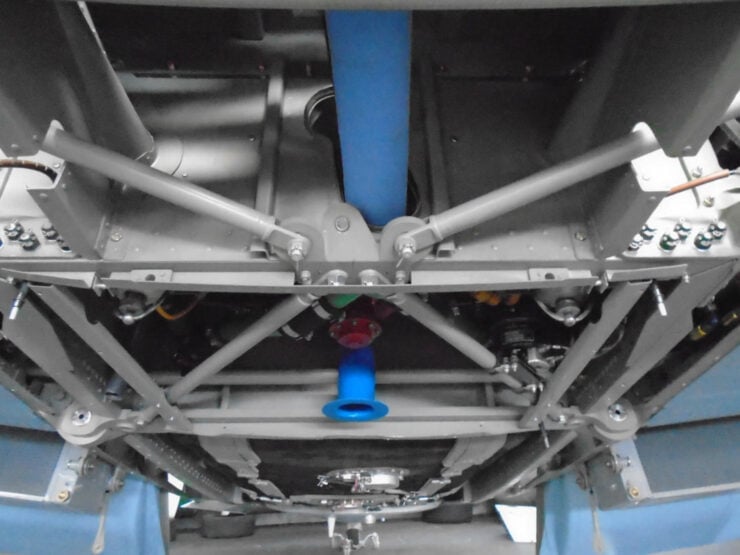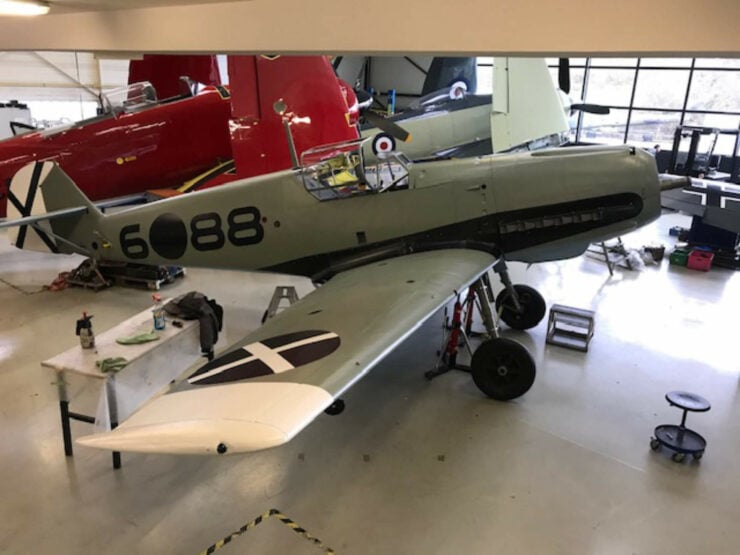This Messerschmitt Bf-109E is the only surviving privately-owned Bf-109E that saw service with the Legion Condor during the Spanish Civil War, and it continued flying until 1958 – almost certainly making it the longest serving Bf109E of all 3,477 aircraft built.
It’s now being offered for sale out of Bremgarten, Germany where it’s being restored by Meier Motors. The restoration appears to be not far off completion, the airframe has been completely rebuilt, as has the Daimler-Benz DB601 engine, the VDM propeller, and the hydraulic and electrical systems. The buyer will have the option of completing the restoration at Meier Motors or having the aircraft delivered to them as it is today.
Fast Facts – The Messerschmitt Bf 109
- The Messerschmitt Bf 109 originated in the mid-1930s as the German Reichsluftfahrtministerium (RLM) sought a new high-performance fighter. Designed by Willy Messerschmitt, it entered service in 1937 and quickly became the backbone of the German Luftwaffe and it first saw action in the Spanish Civil War.
- The Bf 109 played a pivotal role during the early stages of World War II, showcasing its dominance in aerial combat. It excelled while taking part in German Blitzkrieg tactics and it was a key player during the Battle of Britain, facing off against the Royal Air Force.
- The Bf 109 underwent continuous development, resulting in various models and variants. Notable variants included the Friedrich, Gustav, and Kurfürst. These showcased improvements such as more powerful engines, increased firepower, upgraded armor protection, and improved aerodynamics.
- The Messerschmitt Bf-109E you see here is a historically significant aircraft and the only privately owned Bf-109E that saw service with the Legion Condor during the Spanish Civil War. It remained in active service until 1958, making it one of the longest-serving examples of its kind.
The Messerschmitt Bf 109
The roots of the Messerschmitt Bf 109 can be traced back to the mid-1930s when the German Reichsluftfahrtministerium (RLM) sought a new high-performance fighter aircraft. The designer was Willy Messerschmitt, a renowned figure in European aviation circles. Introduced in 1937, the Bf 109 swiftly became the backbone of the German Luftwaffe alongside the similarly long-serving Focke-Wulf Fw 190.


The Bf 109 was powered by a liquid-cooled, inverted V-12 engine. Initially, it was initially powered by the Junkers Jumo 210, but subsequent models were equipped with more powerful engines. The most common powerplant was the Daimler-Benz DB 601 series engine, which provided an impressive output of 1,200+ bhp.
With this engine, the Bf 109 offered exceptional performance. It had a maximum speed of approximately 640 kilometers per hour (398 miles per hour) at altitude, allowing it to outpace many of its Allied adversaries. The aircraft’s rate of climb was equally impressive, climbing at a rapid rate of 1,000 meters (3,281 feet) in under two minutes from sea level.
Bf 109: Armaments
The Bf 109’s firepower typically featured a consisted of machine guns and cannons, the machine guns were concentrated in the nose of the aircraft. The cannons, often mounted in the wings, provided additional punch. The armament varied across different models, but a common configuration included two 7.92 mm machine guns and two 20 mm cannons.
Above Video: This episode of Dark Skies tells the history of the Messerschmitt Bf-109. It’s only 11 minutes long but it does a great job of condensing the history of the aircraft.
During the early stages of World War II, the Bf 109 played a pivotal role in German military strategies, dominating the skies over Europe. Its exceptional climb rate and firepower, combined with its maneuverability, made it a formidable opponent.
The Bf 109’s legacy is particularly associated with the dogfights during the Battle of Britain, where it clashed with the Royal Air Force’s Spitfires and Hurricanes – ultimately succumbing to the RAF pilot’s dogged determination.
The Variants
Over the course of its operational life, the Bf 109 underwent numerous modifications and improvements. The variants including the “Anton”, “Berta”, “Caesar”, “Dora”, “Emil”, “Friedrich”, “Gustav”, and “Kurfürst” showcased enhanced engines, increased firepower, and improved armor protection.
The names were chosen to reflect the individual model’s letter designation, for example the Bf 109G, with “G” being “Gustav” in the German phonetic alphabet of World War II – their equivalent to the Allied WWII CCB (ICAO) phonetic alphabet (Alpha, Bravo, Charlie, etc).


Despite its undeniable strengths, the Bf 109 had its fair share of challenges and limitations. Its relatively short range restricted its operational capabilities, necessitating the establishment of airfields closer to the frontlines. Additionally, the aircraft’s narrow landing gear and cockpit design posed challenges during takeoff and landing, often leading to accidents.
Beyond its wartime accomplishments, the Messerschmitt Bf 109 left an indelible mark on the history of aviation. Its design principles influenced future aircraft, and many nations, including Spain, Finland, and Hungary, operated various versions of the Bf 109 even after the war’s end.
The Messerschmitt Bf 109 Shown Here
The aircraft you see here is one of very few surviving original Bf 109s left in the world. It currently belongs to a British Warbird connoisseur and pilot who now needs to sell it as he is not able to renew his Aviation Medical Certificate – meaning he wouldn’t be able to fly it.


The plane is currently in Germany and most of the way through a restoration back to full flying status with the experts at Meier Motors in Bremgarten, Germany.
The airframe has already been fully restored, the hydraulic and electrical systems are all fitted, and the Daimler-Benz DB601 engine was overhauled by Mike Nixon of Vintage V12s in 2017. The VDM propeller was overhauled by Skycraft in the United Kingdom in 2022.
The sheet metal workers at Meier have now finished reconstructing the upper and lower engine cowlings, with reference to original plans.
The wings were restored to the configuration in which they were found, in E-3 specification with 20mm cannons, and the fuselage was also completely dismantled – good number of re-usable parts were included in the rebuild which also included new skins throughout.


The aircraft is now being offered for sale through Platinum Fighter Sales and the new owner will be able to decide if they would like to discuss having the restoration completed at Meier Motors or if they would like to take delivery of the aircraft as it stands today.
The asking price is $6,000,000 USD, which sounds like a lot but in the world of classic warbirds it’s an entirely reasonable figure – particularly when you remember that this will be one of the only airworthy Bf 109s in the world once the restoration is complete.
If you’d like to read more about it or register your interest you can visit the listing here.














Images courtesy of Platinum Fighter Sales + Meier Motors








